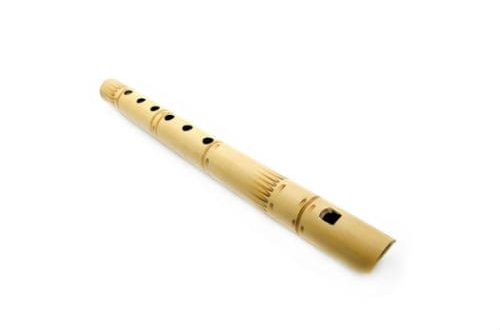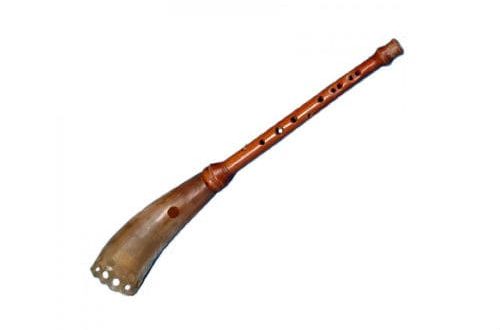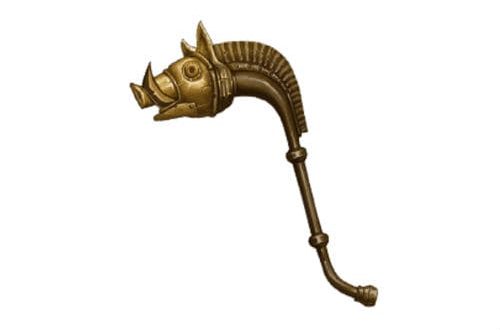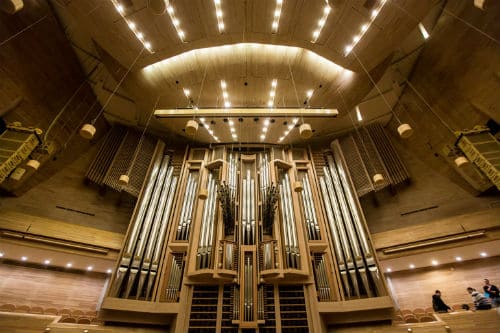
Organ: description of the instrument, composition, sound, types, history, application
The organ is a musical instrument that impresses not only with its sound, but also with its size. He is called the king in the world of music: he is so monumental and majestic that he leaves no one indifferent.
Basics
The group of instruments to which the organ belongs are wind keyboards. A distinctive feature is the huge size of the structure. The largest organ in the world is located in the USA, the city of Atlantic City: it includes more than 30 thousand pipes, has 455 registers, 7 manuals. The heaviest human-made organs weighed over 250 tons.

The instrument sounds powerful, polyphonic, causing a storm of emotions. The musical range of this is limited to five octaves. In reality, the sound possibilities are much wider: by switching the registers of the organ, the musician calmly transfers the sound of notes by one or two octaves in any direction.
The possibilities of the “King of Music” are almost limitless: not only all kinds of standard sounds are available to him, from the lowest to incredibly high. It is in his power to reproduce the sounds of nature, the singing of birds, the ringing of bells, the roar of falling stones.
Device organ
The device is quite complex, including a variety of elements, details, parts. The main components are:
- Chair or console. A place intended for the musician to control the structure. Equipped with levers, switches, buttons. There are also manuals, foot pedals.
- Manuals. Several keyboards for playing with hands. Quantity is individual for each model. The maximum number for today is 7 pieces. More often than others, there are designs that have 2-4 manuals. Each manual has its own set of registers. The main manual is located closest to the musician, equipped with the loudest registers. The number of manual keys is 61 (corresponds to a range of 5 octaves).
- Registers. This is the name of the organ pipes, united by a similar timbre. To turn on a certain register, the musician manipulates the levers or buttons on the remote control. Without this action, the registers will not sound. Organs of different countries, different eras have a different number of registers.
- Pipes. They differ in length, diameter, shape. Some are equipped with tongues, others are not. Powerful pipes make heavy, low sounds, and vice versa. The number of pipes varies, sometimes reaching ten thousand pieces. Production material – metal, wood.
- Pedal keyboard. Represented by foot keys that serve to extract low, bass sounds.
- Traktura. A system of devices that transmit signals from manuals, pedals to pipes (playing tract), or from a toggle switch to registers (register tract). The existing variants of the tractor are mechanical, pneumatic, electric, mixed.
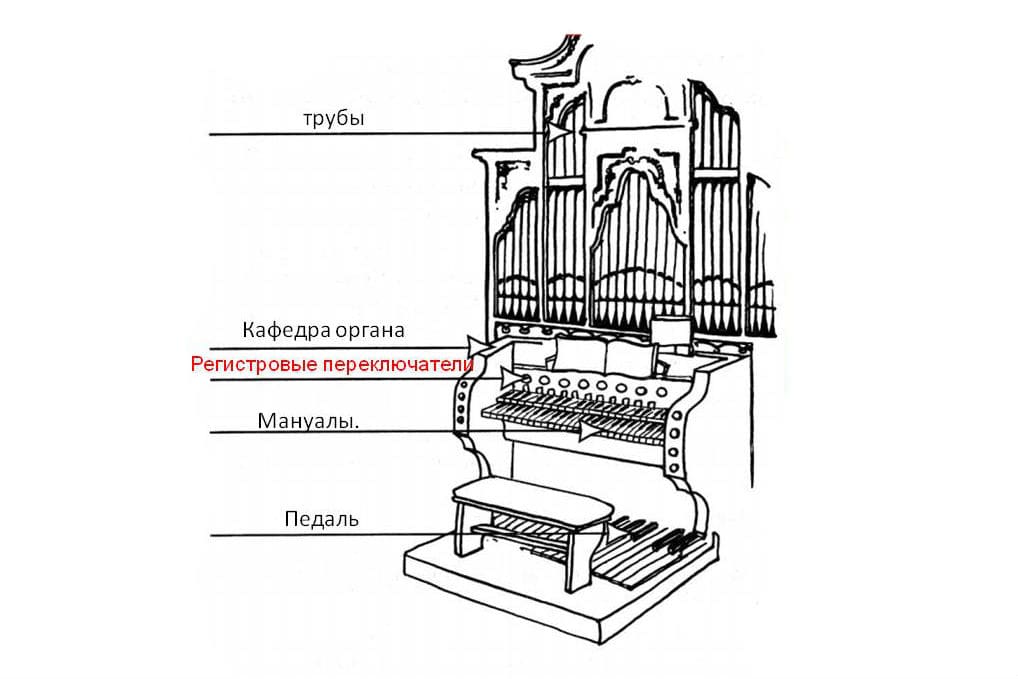
History
The history of the instrument does not cover centuries – millennia. The “King of Music” appeared before the advent of our era, the Babylonian bagpipe is called its progenitor: it had fur that inflates air through tubes; at the end there was a body with pipes equipped with tongues and holes. Another ancestor of the instrument is called the panflute.
An organ operating with the help of hydraulics was invented by the ancient Greek craftsman Ktesebius in the XNUMXnd century BC: air was forced inside with a water press.
Medieval organs were not distinguished by an elegant structure: they had thick, uncomfortable keys located at some distance from each other. It was not possible to play with fingers – the performer hit the keyboard with his elbow, fist.
The heyday of the instrument began at the moment when the churches became interested in it (XNUMXth century AD). The deep sounds were the perfect accompaniment to the services. Improvement of the design began: light organs turned into huge tools, occupying a significant part of the temple premises.
In the XNUMXth century, the best organ masters worked in Italy. Then Germany took over. By the XNUMXth century, every European state had mastered the production of a popular little thing.
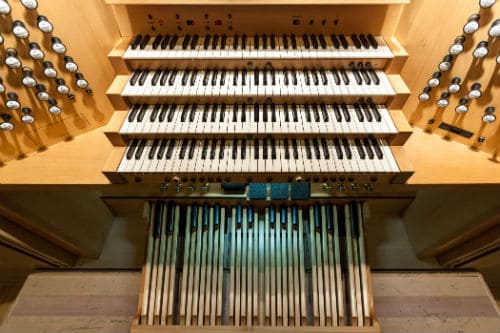
The XIV century is the heyday of the instrument: the design was improved, the size of the keys and pedals was reduced, the registers were diversified, and the range was expanded. XV century – the time of the appearance of such modifications as a small organ (portable), stationary (medium size).
The turn of the XNUMXth-XNUMXth centuries is considered to be the “golden age” of organ music. The design was improved to the limit: the instrument could replace an entire orchestra, produced an incredible variety of sounds. Composers Bach, Sweelinck, Frescobaldi created works especially for this instrument.
The XNUMXth century pushed bulky tools aside. They were replaced by compact designs that are easy to use and do not require complex body movements. The era of the “king of music” is over.
Today organs can be seen and heard in Catholic churches, at chamber music concerts. The instrument is used as an accompaniment, performs solo.
Varieties
Organs are classified according to several criteria:
Устройство: brass, electronic, digital, reed.
Functional: concert, church, theatrical, chamber.
Disposition: classical, baroque, symphonic.
Number of manuals: one-two-three-manual, etc.
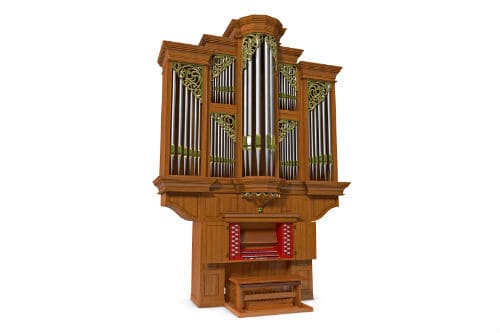
The most common types of organs:
- Wind – equipped with keys, pipes, is a large-sized instrument. Belongs to the class of aerophones. It looks like the majority imagines the organ – a large-scale construction a couple of floors high, located in churches and other spacious rooms.
- Symphonic – a type of wind organ that has an advantage in sound. A wide range, high timbre, register capabilities allow this instrument alone to replace the whole orchestra. Some representatives of the group are equipped with seven manuals, tens of thousands of pipes.
- Theatrical – does not differ in a variety of musical possibilities. Able to make piano sounds, a number of noises. It was originally created with the aim of musical accompaniment of theatrical productions, scenes of silent films.
- The Hammond organ is an electric instrument, the principle of which is based on the additive synthesis of a sound signal from dynamic series. The tool was invented in 1935 by L. Hammond as an alternative for churches. The design was inexpensive, and soon began to be actively used by military bands, jazz, blues performers.
Application
Today, the instrument is actively used by Protestants, Catholics – it accompanies worship. It is installed in secular halls to accompany concerts. The possibilities of the organ allow the musician to play solo or become part of the orchestra. The “king of music” meets in ensembles, accompanies choirs, vocalists, occasionally participates in operas.
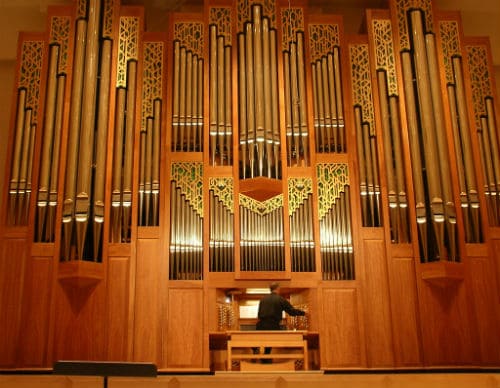
How to play the organ
Becoming an organist is hard. You will need to work with your arms and legs at the same time. There is no standard playing scheme – each instrument is equipped with a different number of pipes, keys, registers. Having mastered one model, it is impossible to transfer to another, you will need to re-learn the device.
Foot play is a special case. You will need special, sensitive shoes. Manipulations are made with a toe, a heel.
Musical parts are written separately for the foot keyboard and manuals.
Composers
Works for the “king of music” were written by talented composers of the past and the century before last:
- M. Dupre
- V. Mozart
- F. Mendelssohn
- A. Gabrieli
- D. Shostakovich
- R. Shchedrin
- N. Grigny



